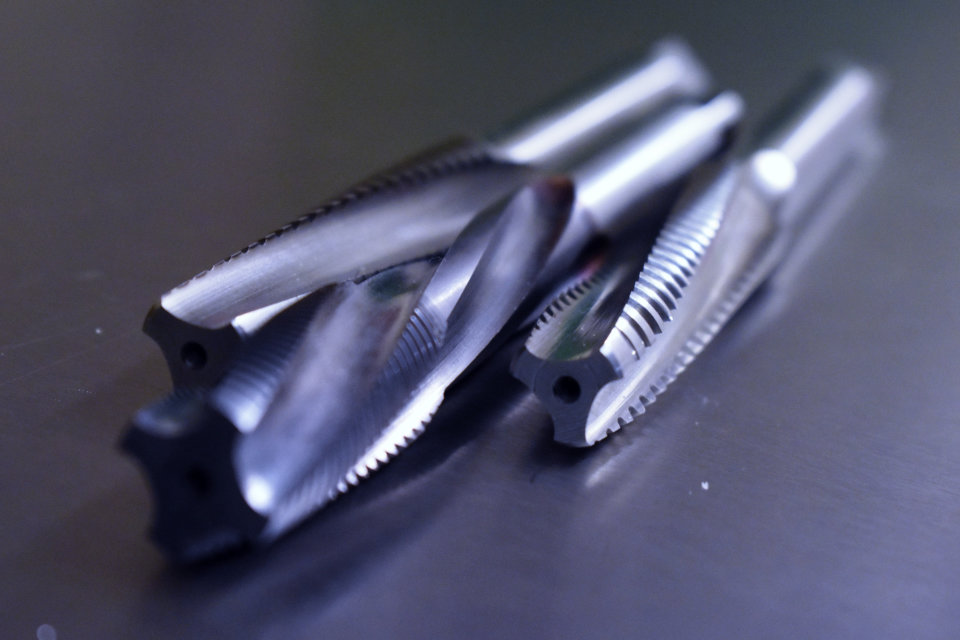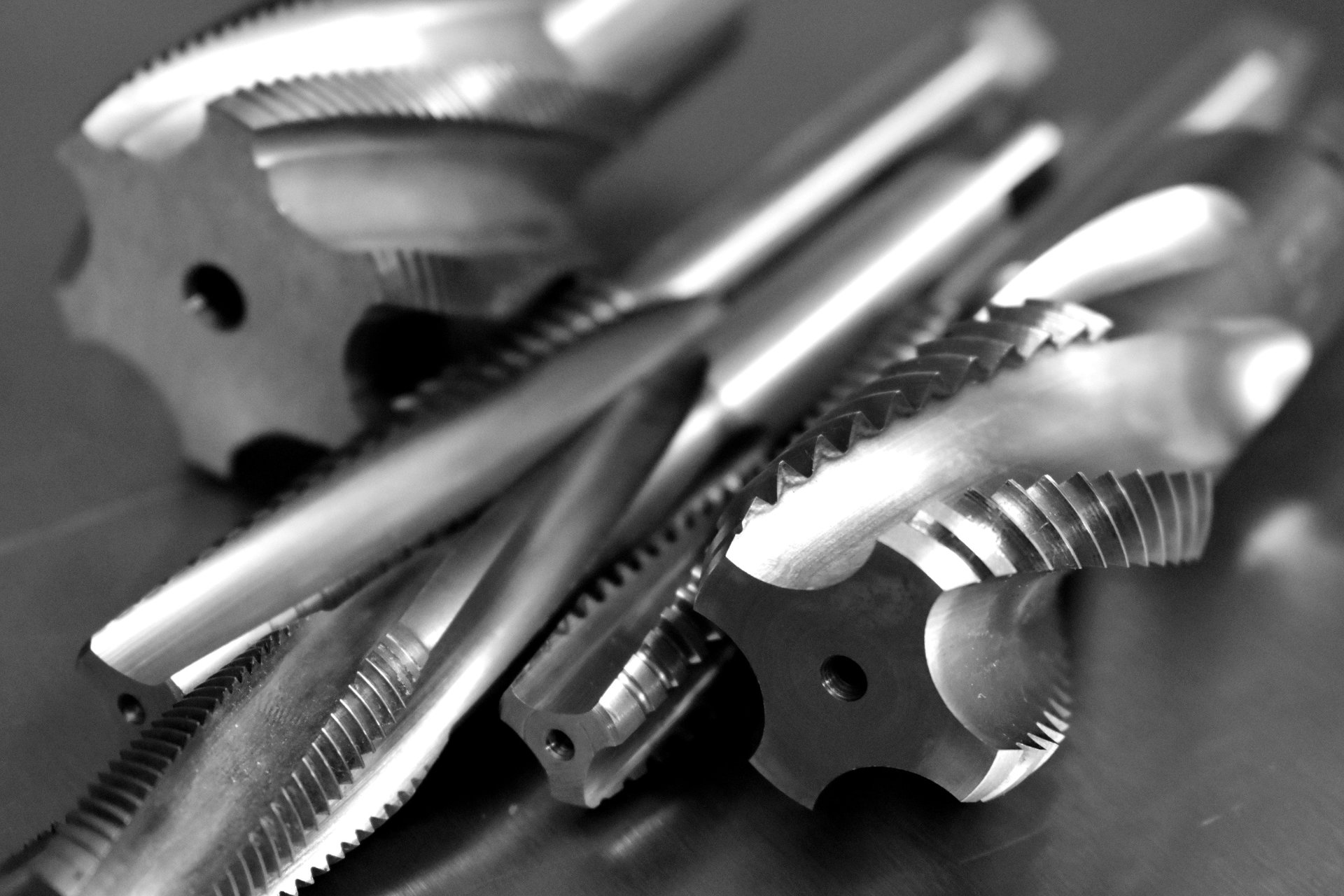Machine Taps
Machine taps are so called because they are designed to be run at higher speeds, and need less cutting power than hand taps.
SPIRAL POINT Also known as ‘gun nose’ or ‘bull nose’ or chip driver. These taps are dimensionally the same as a hand tap, second lead, but have the cutting face ground back relative to the axis of the tap, for the lead portion. This gives the flute a better cutting action, requiring less power, and pushes the cut material forward, allowing free flow of coolant along the flutes to the cutting edge. The flutes are not ground as deeply as for hand taps, giving the tap greater strength. It can therefore be run at higher speeds. Spiral point taps are ideal for machine tapping of through holes, or blind holes where there is enough clearance beyond the threaded portion to accommodate the swarf.
SPIRAL FLUTE These taps are used to produce a thread close to the bottom of a blind hole and therefore have a very short lead. The right hand spiral cut of the flutes acts to force the swarf away from the cutting teeth to the rear of the flutes and out of the hole. They are better on materials which form long continuous stringy swarf, rather than chips. They are also better to tap a thread in a hole where there is a break in the material, e.g. another hole, as the spiral fluting helps the tap to pick up on the other side.



